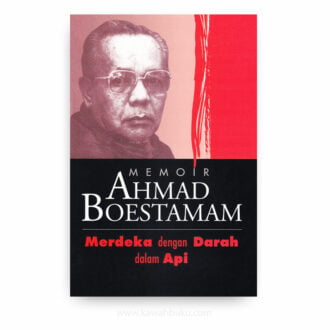Blurring Boundaries: The Chindian Identity Quest captures the fundamental elements of ethnic identity development from the emic perspective of the Chindians and discusses it with academic vigor. It delves into the personal experiences, thoughts, and emotions of 31 Chindian individuals who voluntarily participated in this research in an attempt to understand their ethnic identity development. Set against the backdrop of the Malaysian social landscape and the official administrative structures that exist, this book provides empirical evidence to shed light on the many erroneous assumptions often held about Chindians.
The conceptual framework of this research was developed based on Cornell and Hartmann’s Constructionist Theory of Ethnic Identity Development and Chaudhari and Pizzolato’s Model of Ethnic Identity Development. The research was based on the understanding that cultural and social factors are integral to the process of ethnic identity development. The analysis in this book is based on empirical data collated from 2012 to 2013. While pseudonyms have been used to protect the participant’s identity, the authors sought special permission for photographs featured in this publication. The chapters cover the cultural and social factors influencing the development of ethnic identity among Chindians in the Malaysian context.
Chapter One offers a historical perspective of Chindians in Malaysia to contextualize the research and provide background information. The chapter also discusses the birth registration policy practiced in Malaysia compared with similar policies in other countries. Chapter Two offers a macro-level analysis of the process of ethnic identity development. The chapter helps conceptualize this intricate process while identifying and establishing the main factors involved. Chapter Three presents data on language proficiency and preference among Chindian participants. It discusses the complex issue of having a native language and shares data on the language used in the home domain among family members.
Chapter Four looks at the religious obligations of Malaysian Chindians with fresh data and analysis that defiles commonly accepted norms in the country. There are also insights into the religion of the Chindian siblings compared with their parents’ religion. The underlying factors that contribute towards their choice of religion are analyzed in this chapter. In Chapter Five, data and analysis on the customs commonly practiced by Chindian individuals are presented, as well as the role of parents in instilling customs in their bi-ethnic offspring. The research compares the customs practiced by Chindian siblings and their preference towards the different customs that they are exposed to.
In the following chapters, social factors extending from the relationship within the immediate family circle, friends, and the general public are examined. In Chapter Six, the social aspect of the acceptance of extended paternal and maternal family members towards Chindians is covered. The challenge of gaining acceptance among family members in this chapter adds intriguing detail to the discussion. In Chapter Seven, the research presents data and analysis on the willingness of friends to accept Chindians and in Chapter Eight, the acceptance of members of the general public is captured from both the emic and etic perspectives. In these chapters, participants disclose their life stories and share the highs and lows of living as a Chindian in the pluralistic yet compartmentalized Malaysian society. The author examines data on the use of the phenotypic sight system to aid understanding.
In Chapter Nine, the ethnic identity claim of the Chindian participants is discussed. Their identity claim is a result of cultural and social factors weaved into their daily lives which is closely linked to the conceptual framework of the research. The heterogeneity of the Chindian participants is vividly observed in this chapter. Chapter Nine presents a novel form of ethnic identity among the Chindian participants derived from analyzing the data in this research. Chapter Ten concludes the findings of the research to help readers better understand and accept the Malaysian Chindians. It suggests that formal and social structures should aid in developing a natural ethnic identity among bi-ethnic individuals and cautions against the negative effects of rigid, obsolete policies.
Throughout Blurring Boundaries: The Chindian Identity Quest, the lives of the Chindian participants are aptly captured by the author, who manages to share relevant everyday life experiences. This is aimed at exploring how their ethnic identity has developed, with academic vigor while making it accessible to readers at large. It is hoped that this book will be of interest to bi-ethnic individuals, social scientists, and engineers, anthropologists, sociologists, parents of bi-ethnic children, and the general public.











Reviews
There are no reviews yet